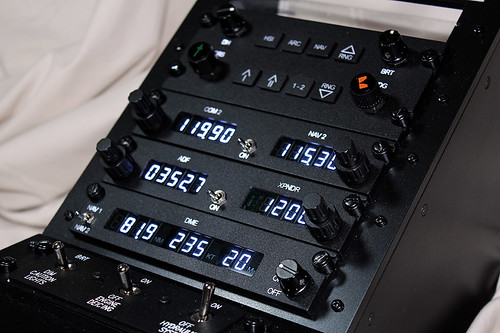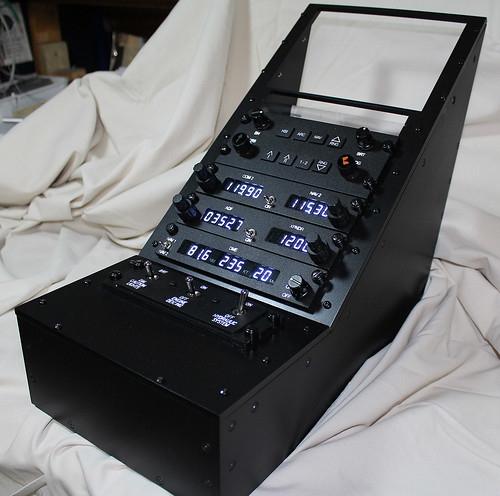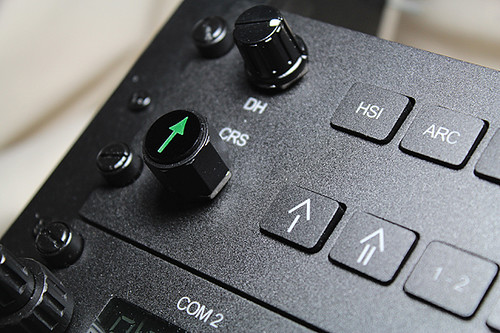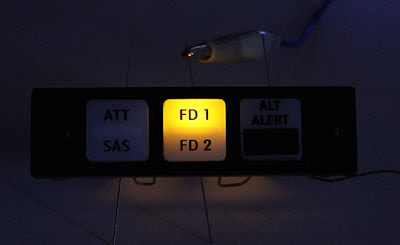We don't offer a lot of 737 products as there are already plenty of quality manufacturers in this market and there's not really much else that we could normally offer over and above what's already available. Recently, however, we've been working with a customer who has specific space limitations and therefore custom measurements are required to properly house the panels in their rightful places.
After much testing and verification in our workshop to prove the possibilities, the panel will be used by our customer with his PMDG 737-800 NGX software via one of our 64 Input Boards for the switches, and a Conditional 64 Output Board to drive the LEDs in the annunciators.
And so this is the Boeing 737 N1 SET / SPD REF / AUTO BRAKE Panel that we dispatched to him a couple of weeks back, complete with our newly developed backlighting process. We haven't implemented this backlighting technique across our entire product range at the moment, as due to time restraints - and getting work out to customers - its become more of a panel by panel expansion (I guess that would be the best way to describe it!) ...
Alongside the panel itself, we also made the functioning combination switches which include a rotary switch, and an encoder (with pushbutton also if required). As you can tell from the positioning of the text, we've actually used some 30 degree rotaries as the 45 degree switches we had access to weren't able to be readily altered for the purposes required.
As a one-off type of project, a small section of vero board has been used to mount the small MFD switches, which isn't perhaps very pretty but gets the job done all the same! The photo below shows the panel about 80% wired.
A notable couple of omissions on this panel are obviously the two annunciators that accompany it, because we had already built these previously for our customer, so we simply built the rest of the panel around these measurements and the overall dimension constraints for the panel that were originally provided to us. The dual concentric knobs are designed and manufactured by us as well.
We've also improved our engraving technique lately as well, which is hopefully demonstrated by the picture above. It takes a little longer to accomplish, but the results are certainly worth it ...

















.jpg)
.jpg)
.jpg)
.jpg)

.jpg)




.jpg)

.jpg)
.jpg)
.jpg)



















